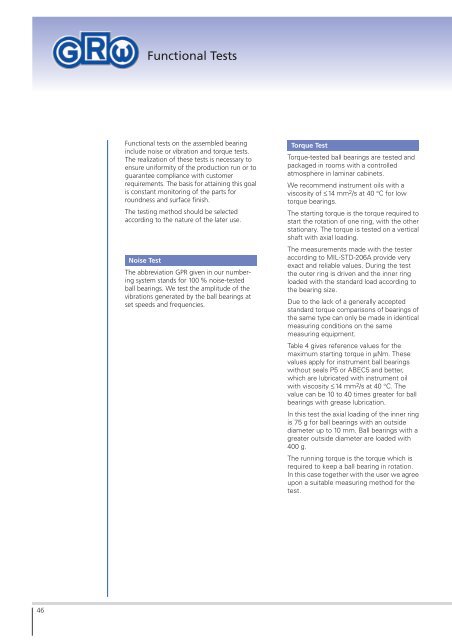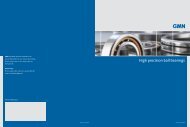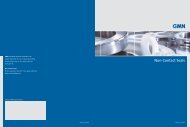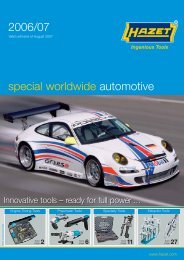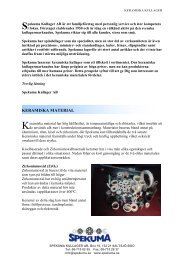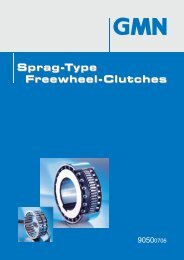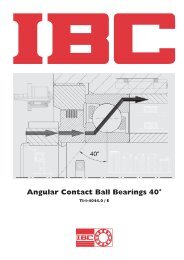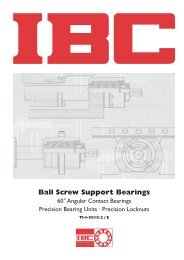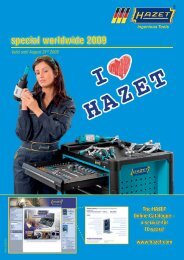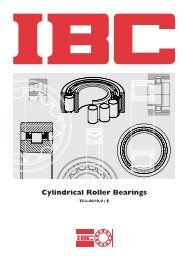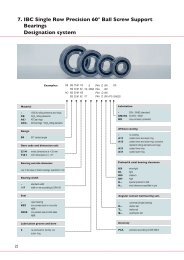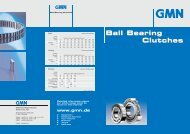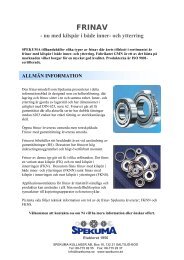Create successful ePaper yourself
Turn your PDF publications into a flip-book with our unique Google optimized e-Paper software.
Functional Tests<br />
Functional tests on the assembled bearing<br />
include noise or vibration and torque tests.<br />
The realization of these tests is necessary to<br />
ensure uniformity of the <strong>product</strong>ion run or to<br />
guarantee compliance with customer<br />
requirements. The basis for attaining this goal<br />
is constant monitoring of the parts for<br />
roundness and surface finish.<br />
The testing method should be selected<br />
according to the nature of the later use.<br />
Noise Test<br />
The abbreviation GPR given in our numbering<br />
system stands for 100 % noise-tested<br />
ball bearings. We test the amplitude of the<br />
vibrations generated by the ball bearings at<br />
set speeds and frequencies.<br />
Torque Test<br />
Torque-tested ball bearings are tested and<br />
packaged in rooms with a controlled<br />
atmosphere in laminar cabinets.<br />
We recommend instrument oils with a<br />
viscosity of ≤14 mm 2 /s at 40 °C for low<br />
torque bearings.<br />
The starting torque is the torque required to<br />
start the rotation of one ring, with the other<br />
stationary. The torque is tested on a vertical<br />
shaft with axial loading.<br />
The measurements made with the tester<br />
according to MIL-STD-206A provide very<br />
exact and reliable values. During the test<br />
the outer ring is driven and the inner ring<br />
loaded with the standard load according to<br />
the bearing size.<br />
Due to the lack of a generally accepted<br />
standard torque comparisons of bearings of<br />
the same type can only be made in identical<br />
measuring conditions on the same<br />
measuring equipment.<br />
Table 4 gives reference values for the<br />
maximum starting torque in µNm. These<br />
values apply for instrument ball bearings<br />
without seals P5 or ABEC5 and better,<br />
which are lubricated with instrument oil<br />
with viscosity ≤14 mm 2 /s at 40 °C. The<br />
value can be 10 to 40 times greater for ball<br />
bearings with grease lubrication.<br />
In this test the axial loading of the inner ring<br />
is 75 g for ball bearings with an outside<br />
diameter up to 10 mm. Ball bearings with a<br />
greater outside diameter are loaded with<br />
400 g.<br />
The running torque is the torque which is<br />
required to keep a ball bearing in rotation.<br />
In this case together with the user we agree<br />
upon a suitable measuring method for the<br />
test.<br />
46


